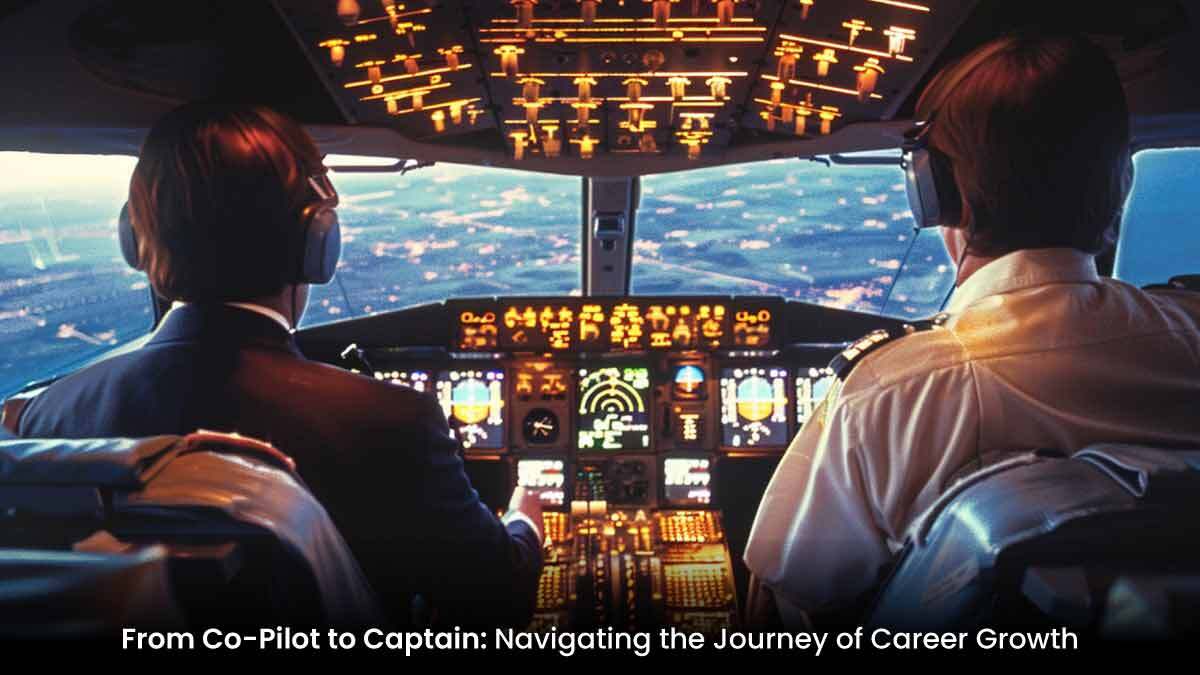
Becoming a captain of a commercial airliner is the result of numerous years of experience. The journey from first officer to captain requires dedication, skill, and perseverance. This blog will outline the steps in progressing from a first officer to the Captain’s seat, providing aspiring pilots with a roadmap to achieve their dreams.
Starting as a Cadet
The journey begins as a cadet or pilot training. Cadets wear one stripe and are usually enrolled in a training programme such as the IndiGo Cadet Pilot Program with a FTO. During this period, they complete the required number of flight hours under the guidance of a specially trained pilot. The training involves theoretical knowledge and practical flight experience, with cadets performing essential aircrew duties and continuously learning. After completing a minimum of 200 flight hours and passing all necessary tests, cadets are promoted to Second Officer.
Rank 2: Second Officer
Second officers, who wear two stripes, are typically the third in command after the Captain and the First Officer. They are responsible for pre- and post-flight inspections and monitoring flight systems while in the air. On long-haul flights, a second officer may serve as a third pilot to ensure adequate rest breaks for the crew. It usually takes one to two years of experience as a second officer before being eligible for promotion to first officer.
Rank 3: First Officer
First Officers, known as co-pilots, wear three stripes and are second in command on flights. They work alongside the Flight Captain to prepare the aircraft for flight, complete inspections and safety checks, and monitor controls during the flight. On longer flights, first officers may operate the aircraft to allow for adequate rest breaks. While typically less experienced than captains, first officers play a crucial role in flight operations. Achieving the rank of senior first officer is the next step for those seeking further advancement.
Rank 4: Senior First Officer
In some airlines, an additional rank exists between the First Officer and Captain: the Senior First Officer. Although they have the same number of stripes as a First Officer, Senior First Officers possess more experience and therefore bear greater responsibilities. They can remain in this rank for anywhere from four to twenty years as they work towards completing the required 3,000 flight hours and honing the necessary skills for Captaincy.
Rank 5: Captain
Achieving the rank of Captain is the ultimate goal for many pilots. Captains, who wear four stripes, are responsible for all aspects of the flight, including the aircraft, passengers, and crew. They ensure that all necessary safety checks are completed before, during, and after the flight. Captains are responsible for planning the flight, performing weather checks, and ensuring that all instruments are properly calibrated. Sitting in the left-hand seat, Captains can fly long-haul and short-haul flights, often assisted by one or two other lower-ranking pilots.
What is the time frame for Captaincy?
The time it takes to become a Captain varies based on the type of airline and the pilot’s competency. To become a commercial aircraft Captain, a pilot must have logged at least 1,500 flight hours and hold a full Air Transport Pilot’s Licence (ATPL). However, most short-haul airlines require a minimum of 3,000 flight hours before considering any pilot for promotion. For pilots flying a maximum of 900 hours a year, it is possible to be promoted to Captain within four to five years at short-haul low-cost airlines with high pilot turnover. Legacy or flag carriers’ time to command is significantly longer, often ranging from ten to twenty years, due to limited expansion and lower pilot turnover.
Command Assessment and Training
Meeting the flight hour requirement is just the beginning. Airlines thoroughly review a pilot’s training record and performance before putting them through a ‘command assessment,’ which may consist of an interview, a simulator check, or both. If the pilot passes this assessment, they are enrolled in a challenging command course, which is not guaranteed to be passed by all.
Becoming a Long-Haul Captain
To become a long-haul Captain, a minimum of 5,000 flight hours are required, which takes at least six years to achieve. This is not necessarily due to capability but because of the limited number of captain positions and promotions based on seniority.
The Final Goal
Only some become Captains. Those with leadership skills, communication abilities, and the right temperament can become Captains. They can enjoy better pay, preferred scheduling, and a position in the topmost hierarchy in the airline profession.
The journey from First Officer to Captain is long and demanding, requiring thousands of flight hours, rigorous assessments, and exceptional skills; for those who are dedicated and passionate about flying, the rewards of reaching the Captain’s seat are well worth the effort. Join Insight Aviation’s IndiGo Cadet Pilot Programme and start your aviation career today.
FAQs
Q. What is the minimum flight hours requirement to become a Captain?
A. It takes a minimum of 3000 hours to become a Captain in a commercial airline.
Q. What additional training is needed for a Co-Pilot to become a Captain?
A. From becoming a Co-Pilot to becoming a Captain, the additional requirements are to hold an ATPL certificate to fly internationally.
Q. Differences in responsibilities between a Co-Pilot and a Captain?
A. Captain leads the overall flight command and controllers. Whereas first officers play a crucial role in flight operations like communicating over radio during take-off and landing.
Q. How long does it typically take to advance from Co-Pilot to Captain?
A. It takes several years of hard work and experience to become a Captain. There is no specific timelines, but typically it takes 4-20 years of experience.
Q. What is the average first officer pilot salary in India?
A. The average salary of a First Officer pilot in India is around INR 30-40 Lakhs pa. The salary is wholly dependent on the interview and the cadet’s skills.

